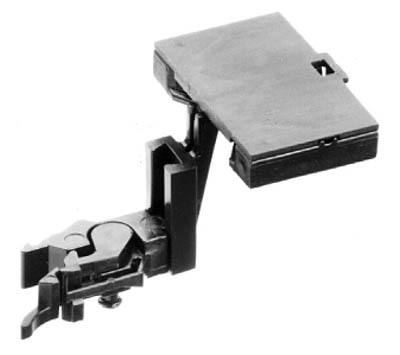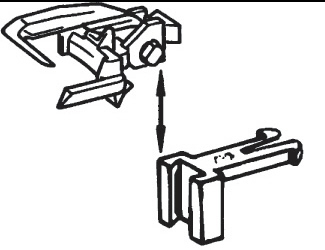
A two-car configuration, DB7, was also used particularly on branch lines.

While not "normal" 3-car units were occasional run if one of the cars was out of service.

In the 70s some were reconfigured to run in push-pull operation with the addition of control cabs. The model represents early era 3 before the 2nd and 3rd classes were combined (klassenreform). The car sets could also be found coupled into other consists with "normal" coaches as well.
While the BR 114 diesel in the pictures above post-dates the markings on the coaches, it needs to be understood that this is a "museum" consist owned by the VEB Waggonbau Görlitz and occasionally gets used in regular service. ;-)
To make the model work I replaced the original couplers with a 6574 Fleischmann close-coupling mechanism that is height adjustable and a 40396 Roco Universal coupler head. Installing these required cutting away some bits on the bottom of the end cars as well as an opening between the buffers so the mechanism could pivot. The bellows between the cars are made of paper and are in great shape. Wheels were swapped to 10.4 mm diameter Sachsenmodelle replacement AC wheelsets that brought the unit down to the proper height and really improved running and reliability through turnouts on my Märklin AC layout. The wheels were made by Bernd Thomschke (benno002-2) who sells all types of brass wheels and buffers via his eBay store at<http://stores.ebay.de/benno002-2> or direct at <http://www.modellbahn-radsatz.de>. From the US, the eBay store is easier. Very responsive vendor.
 |
| 6574 Fleischmann |
 |
| 40396 Roco |
In testing I tried just about every combination I had including some s-curves and tight turnout combinations in the main yard at increasing speeds and went through absolutely smoothly. Night and day difference in running - now completely reliable. It's a nice set, one I look forward to detailing, gently weathering, and most of all running.
Thanks to all the helpful people on the Drehscheibe Online, Railways of Germany, and WorldRailFans, and the Stummi fora.
In the video below a BR78 steam engine is pulling the consist.
For better quality video view it on YouTube.
For better quality video view it on YouTube.








